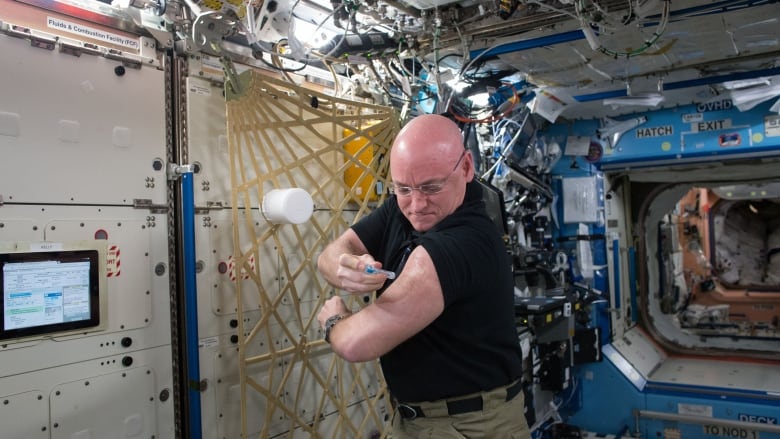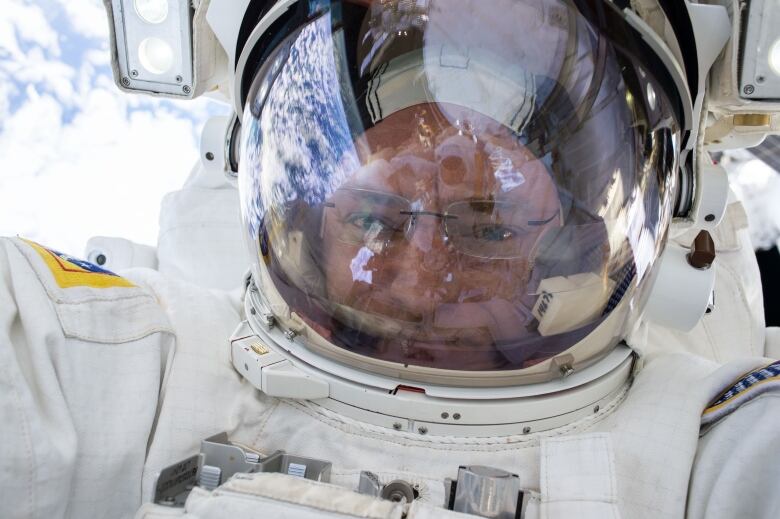Astronauts returning to Earth face tolls to their bodies
In space, no one can hear your bone mineral density erode 1-2% every month

Ground control to Scott Kelly: you'regoing to feela bit dizzy.
After spending 340 days in space breaking an American record by 125 days the NASA astronaut returned home from the International Space Station, touching down yesterday in Kazakhstan.Kelly evenreceived a call from U.S. President Barack Obamathanking himfor his service, according to the White House.
-
Scott Kelly, Mikhail Kornienko back on Earth after almost a year in space
-
PHOTOSA look at how astronaut Scott Kelly spent his year in Space
-
Astronaut twin study could provide valuable data for Mars mission
Space missions force astronauts to live and work in tough environments human beings aren't accustomed oracclimatizedto, but short-term stints of one month or less have relatively mild effects, according to the Canadian Space Agency.
A space odyssey as long as Kelly's, however, carries with it more significant physiological stresses that are often only felt upon return to Earth.
"In the same way that every organ system needs to adapt to weightlessness, every organ system needs to re-adapt after a long period of time back to an Earth environment," Canadian astronaut BobThirsk previously told CBC News.
Here are some of the effects space has on the human body:
Bones
According to the Canadian Space Agency, astronauts can lose on average one to two per cent of their bone density a month, mostly in their legs.
Bones are constantly reshaping themselves in relation to the stress put upon them, and loss occurs in space's weightless environment because your body devotes less energy to build a tougher bone structure to fight gravity if it doesn't seem necessary.
"Your bones are ... being continually eaten away and replenished," Bjarni Tryggvason, one of Canada's first astronauts, told CBC in 2013.
"The replenishment depends on the actual stresses in your bones and it's mainly ... bones in your legs where the stresses are all of a sudden reduced [in space] that you see the major bone loss," he said.

The excess bone matter is discharged from your body via your urine, saidChris Hadfield.
"The first time youpee in space, your urine is full of your skeleton," he said during a 2011 presentation to the Royal Astronomical Society of Canada.
Astronauts are told to work out for a couple of hours a day, andtake nutritional supplements and medication prescribed to post-menopausal women to try and counter the bone loss, but rehab is still needed.
Thirsk, who underwent a six-month space mission in 2009, said it took about a year for his bone calcium levels to return to pre-flight levels.
"The rule of thumb is for every month in space, it takes two months for the bones to recover," he said.
Muscles and joints
Long-term space missions can reduce muscle mass and strength, again caused by reduced gravity and again affecting largely the legs.
Like the opposite of wearing a weighted exercise vest, low gravity means less strain to your muscles causing them to weaken.
Astronauts can lose as much as 20 to 40 per cent muscle size and functionduring long trips in space, according to NASA.
The two hours they spend exercising mitigates the deterioration to a degree, but, like with bone loss, astronauts go through a rehab program when they're back onEarth to regain their muscle mass and strength.
Muscle resistance exercises"don't stop the deterioration in our body, but it slows it down," said Thirsk.
He also said within six weeks of return to Earth, he was able to get his muscles back to pre-flight status.

Astronauts can also go throughdecompression sickness.
DCS or "the bends" if you're familiar with scuba diving or early Radiohead occurs when the body goes through rapid and tremendous decreases in atmospheric pressure, such as resurfacing too quickly in water.
It creates tiny nitrogen bubbles in the bloodstream and tissues, which causes symptoms ranging from numbness to joint pain.
Astronauts can get DCS by going from normal cabin pressure the ISS is pressurized to 14.7 psi, the equivalent to the atmospheric pressure at sea level to a lower atmospheric pressure, like when they go on extravehicular activities (EVA).
To reduce risks of DCS, astronauts breathe100 per cent pure oxygen for one to two hours at normal cabin pressure, and then reduce the pressure from 14.7 to 10.21 psi for 12 hours. Then, after wearing the EVA mobility suit, they breathe100 per cent oxygen for one more hour before going outside.
Cardiovascular
Soon after being launched into space, an astronaut's blood moves upwardsfrom the legs to the upper body and head.
The body's natural reaction is to decrease the amount of blood in the body, and when an astronaut goes from zero gravity to normal or partial gravity such as coming back to Earth from space the decreased amount can result in temporary low blood pressure.
This affects the astronauts' motor skills and can hinder their ability to do everyday things, like walking or driving a car, and some astronauts may faint after space flights.
"I had trouble maintaining blood pressure to my head and therefore I felt pretty faint and dizzy," said Thirsk. "In fact, I needed to have a transfusion of normal saline to get my blood pressure up shortly after I got back."
Astronauts can also experience heart and blood vessel problems down the line, such as artery stiffness,according to University of Waterloo professor Richard Hughson.
"The astronauts came back from space with carotid arteries that were about 20 to 30 years stiffer equivalent than what happens with normal aging," said Hughson.
Increased stiffness of the arteries is associated with increased risks of heart disease and stroke.
Eyes
A 2012 study linked prolonged periods in the zero gravity of space with eye abnormalities.
Astronauts have complained for decades about vision problems such as blurriness following trips into space, and a NASA survey of 300 astronauts found correctable nearand distance vision problems in 48 per cent of those who had brief missions.

In some cases, the vision problems lasted for years after the astronauts returned to Earth.
The study suggested the problems might be due tofluid shifting toward the head during extended periods of time in microgravity.
Thiscould result in abnormal flow of spinal fluid around the optic nerve, changes in blood flow in the vessels at the back of the eye or chronic low pressure within the eyes, the researchers said.
With files from CBC News and The Associated Press













_(720p).jpg)


 OFFICIAL HD MUSIC VIDEO.jpg)
.jpg)



























































































